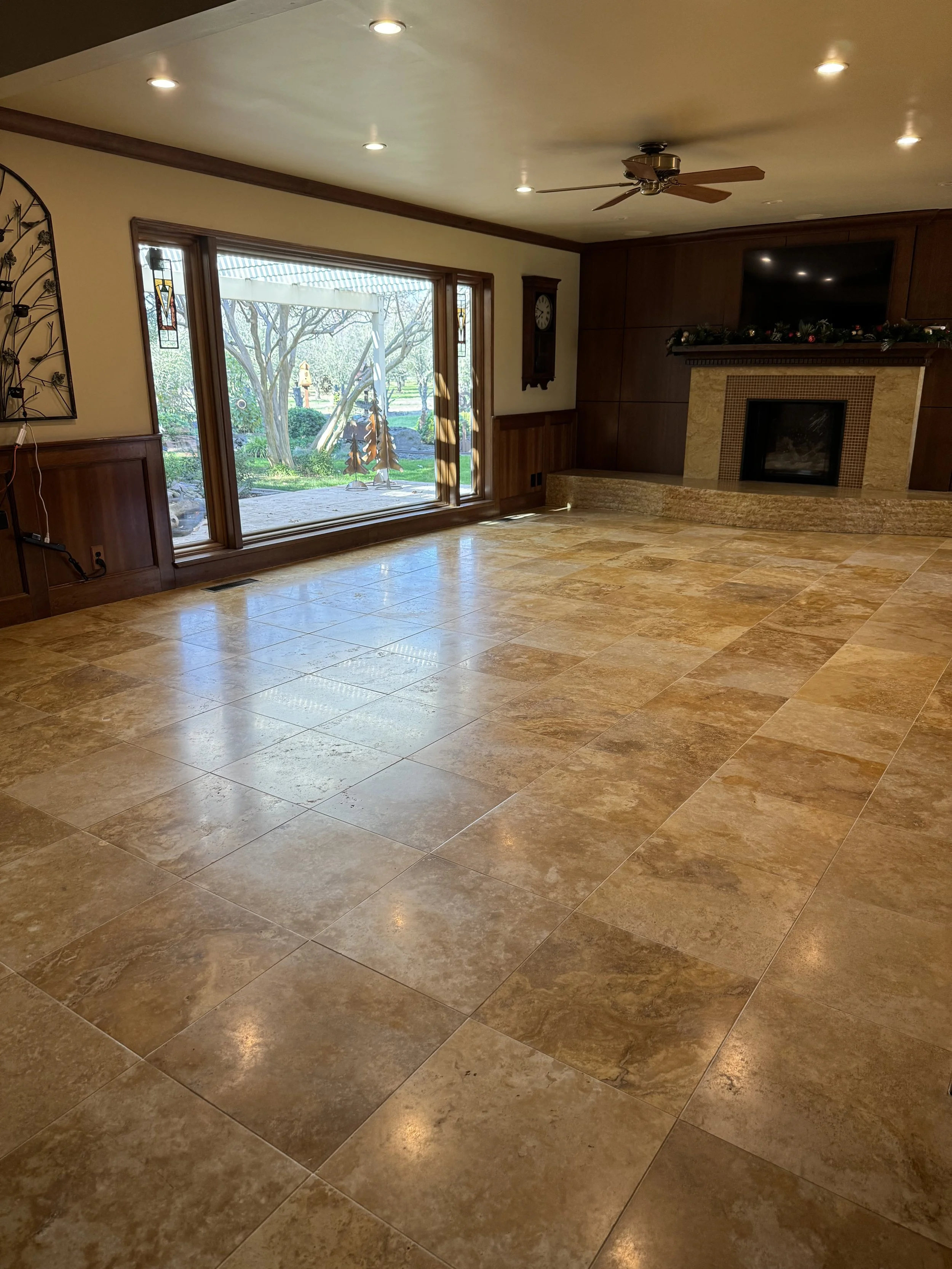Travertine Restoration
Cleaning, Repair, and Maintenance
Essential practices include regular cleaning, repair, and professional honing, polishing, and sealing. These steps help preserve the stone's natural elegance and longevity. In the following sections, we cover key aspects of travertine maintenance, ensuring your surfaces stay stunning and resilient for years.
Travertine forms in hot springs and limestone caves, where carbon dioxide creates small holes throughout the stone. When buying travertine, you can choose between versions with the natural holes intact or those that have been filled. Both filled and unfilled travertine can be honed or polished to restore their original condition.
The Travertine Restoration Process
Restoring travertine involves returning it to its original beauty and condition. This process generally includes deep cleaning, honing to address minor scratches and stains, and polishing to enhance the stone’s natural brilliance. For significant etching or discoloration, professional restoration services offer more intensive treatments to rejuvenate the travertine.
Step 1.
Travertine Cleaning
The first step in restoring Travertine to like-new condition is through deep cleaning to remove years of dirt and build up. Marchbanks Stone Resoration uses a mixture of proper cleaning solutions, agitation and hot water extraction to ensure all dirt and debris is removed before moving onto the next steps.
Step 2.
Travertine Repair
Despite its durability, travertine can develop chips, cracks, or holes over time. Repairing these imperfections is one of our specialties and is crucial to maintaining the stone’s integrity and appearance. Small chips and cracks can be filled with a custom color matching epoxy or filler, which can be sanded and polished to blend seamlessly with the surrounding stone.
Step 3.
Travertine Honing
Honing is an essential process for maintaining the smooth and matte finish of travertine. This process involves sanding the stone to remove surface imperfections, minor scratches, and etches resulting in a smooth, flat finish. Honing is particularly beneficial for high-traffic areas, as it helps to improve the stone’s durability and appearance. Regular honing not only restores the stone’s surface but also prepares it for polishing and sealing, ensuring a consistent look throughout your travertine surfaces. Travertine most often is left at a honed finish also known as matte or satin.
Step 4.
Travertine Polishing
Polishing travertine enhances its natural beauty by creating a glossy, reflective finish. This process involves using fine abrasives and polishing powders to smooth the stone’s surface, bringing out its inherent luster and color variations. Polishing not only improves the aesthetic appeal of travertine but also adds a layer of protection against scratches and stains. Regular polishing helps to maintain the stone’s shine and keeps it looking new for longer.
Sealing is a crucial step in protecting travertine from staining. A high-quality sealer penetrates the stone, creating an invisible barrier that repels water, oils, and other contaminants. Depending on the type and usage of your travertine, cleaning and sealing should be done every 1-3 years to ensure optimal protection. Regularly sealed travertine surfaces will remain resilient and beautiful, extending their lifespan and preserving their natural elegance.
Step 5.
Travertine Sealing
Travertine Maintenance
To keep your Travertine surfaces looking their best, follow these essential maintenance steps:
1. Regular Cleaning
2. Sweep or vacuum frequently to remove dirt and debris that can cause scratches.
3. Mop with a pH-neutral stone cleaner and warm water—avoid acidic or harsh chemicals.
4. Wipe up spills immediately to prevent staining.
Would you like to receive a quote on your residential / commercial travertine project?
Click the link below to use our contact form.
For prompt service, please dial: (916) 295-8068



